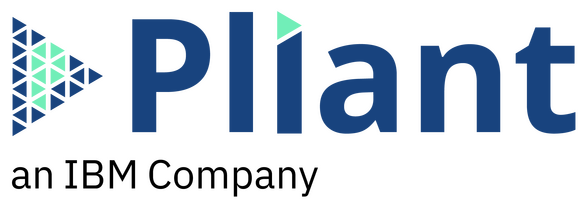P-L-I-A-N-T
By Nichaela Williams
To kick off 2021, we’re thrilled to introduce a brand new blog series to shepherd you through an infrastructure automation knowledge journey. You’ll find that throughout Q1 we’ll be posting six value-packed blog posts, each representing one of the letters in our name “P-L-I-A-N-T” – because why not! We’re optimistic that this six-part series will bring clarity to questions around where to start to gain new IT efficiencies within your organization, which tools might be right for you to streamline delivery, and how to maximize your ROI in new tools.
Our first post represents, of course, the “P” in Pliant so let’s dive in and talk about productivity.
The world is always looking for more productivity. When there is more efficiency in the workplace, more output can be generated to produce a profit. We all know this is crucial to running a successful business. Sounds pretty straightforward, doesn’t it?
Yet, productivity is more than just getting stuff done; it is streamlining tasks in the most effective way possible that minimizes inputs, such as time, money, and FTEs, while still maximizing value and quality. that minimizes time inputted while maximizing quality. This balance can be hard to find and being productive is much easier said than done. However, an organization-wide infrastructure automation platform, like Pliant, can dramatically improve the way your business operates. Low-code automation, allows you to maximize the value of your existing technology stack, introduce new technologies more seamlessly, and most importantly saves time and resources by eliminating high-value repetitive IT tasks. Read on for a high-level view of what we mean!
In this post:
- Productivity and Returns on Investments
- Pliant and increased efficiency
- Starting Point
Productivity and ROI
The ROI on process automation can be measured in numerous ways depending on the use case and your organization’s goals. For this post, we’re going to focus our attention on the investment of time, an every-day commodity. Productivity cannot exist without a focus on where time in the workplace is spent. On average, 30% of an IT department’s time is spent on easily automated, repetitive tasks. When manual tasks are automated, cost decreases expeditiously. Pliant Workflow Process Automation saves time and allows the reduction of time to market while also increasing savings. Time-saving productivity through the automating of tasks is essential to this process.
For more on how to assess ROI through selecting the right use cases for your team and effectively measuring the magnitude of the benefits, take a look at our brief 4-page-guide here!
Pliant and Increased Efficiency
To achieve an ROI that will impress, it’s important to not only increase productivity but also increase efficiency. Though productivity comes in large part from doing tasks quickly, things still have to be done correctly which takes a certain level of effort. Pliant allows you to not only reduce the amount of time spent on tasks by automating them, but also to be more effective by reducing the amount of effort these tasks take to complete. Pliant’s straightforward low-code-no-code platform and built-in debugger make it easy to create automated workflows that will, in turn, increase productivity. For more about how low-code can help you, check out the next post in this series on Low Code + Low Barriers to entry.
Starting Point
So, where do you start? The world of platform automation is rapidly evolving as more and more organizations digitally transform to meet the needs of complex business. The benefits of using automation to meet the growing demands, such as increased productivity, are clear. Start your journey towards greater productivity with us by scheduling a free walkthrough of our platform here.
Interested in chatting with someone on our team about a specific question that you have? Contact us directly.

